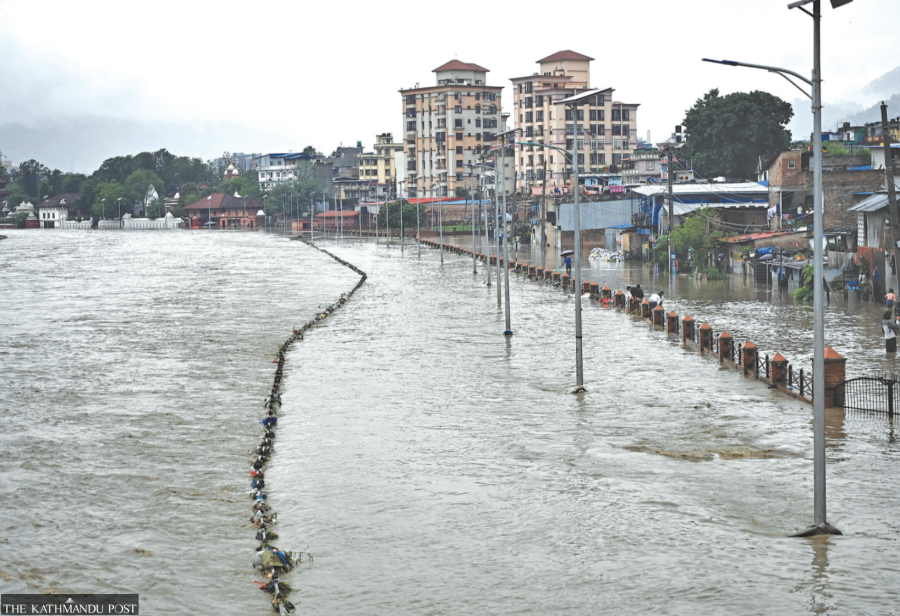Editorial
Missing state
Little has been done for those affected by floods and landslides over the years.
The monsoon has been causing havoc right across Nepal in the past couple of days. At least 70 people have been killed in floods, landslides and other monsoon-related disasters since June 10, according to the Nepal Police. Five others were missing and 86 people were injured in water-induced disasters over a month. There must have been many other incidents not included in official records. The monsoon entered Nepal from its eastern part in the second week of June. Heavy rainfalls that caused huge damage in Bagmati, Gandaki and Lumbini provinces until Sunday, wreaked havoc in far-western Nepal on Monday.
As a country with over 83 percent of its land covered by hills and mountains, Nepal is always at the risk of landslides and floods mainly in the monsoon period. Similarly, people in the southern belt are tormented by inundation. Monsoon-related disasters are a yearly occurrence. The Monsoon Preparedness and Response Plan 2024 estimated that over 412,000 households may be affected and of them over 83,000 are likely to be badly hit by monsoon-related disasters this season. In a decade between April 2014 to April 2024, there were 1,602 recorded floods and 2,840 landslides. At least 3,052 people were killed, 791 went missing and 4,176 were injured in the period, according to the National Disaster Risk Reduction and Management Authority. Similarly, 16,054 buildings and other structures were damaged. This shows the magnitude of the losses caused by monsoon-related disasters in the country.
As heavy rains have battered almost all parts of the country, a large number of people have been struggling to deal with the disasters. Besides deaths, missing and injuries, thousands have been displaced and taking shelter in nearby places. In such times, saving lives by rescuing people trapped in difficult situations should be the government’s first priority. Logically, what follows is shifting people from disaster-prone areas to safer places, swiftly distributing reliefs and working on a plan to rehabilitate the displaced. Though our three security agencies often do a commendable job of saving people’s lives, they are still not well-equipped. Just months ago, some of them died while trying to contain wildfires. Rescuers should be equipped with better gears and other logistics before they set out on rescue missions. Moreover, relief distribution and rehabilitation works often court controversy either because of substandard quality of the goods distributed, or the irregularities while carrying out the task.
When it comes to rehabilitating flood victims, our state agencies have utterly failed. Thousands of people have been languishing in either nearby forest areas, on riverbanks or other unsafe places for years where they had supposedly been shifted for a few months. For instance, floods in Koshi in August 2008 displaced 7,563 families from the present-day Shreepur, Haripur, and West Kushaha, located across different wards of Koshi Rural Municipality. But they are still living in makeshift huts and mud houses as the government has failed to properly rehabilitate them in the past 16 years. The Koshi Flood Victims Struggle Committee is fighting for their basic rights. A state that cannot ensure the basic safety of its citizens, we are afraid, has gotten its priorities badly wrong.




 12.12°C Kathmandu
12.12°C Kathmandu














